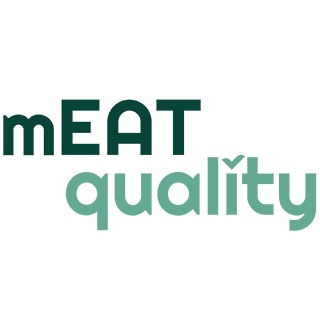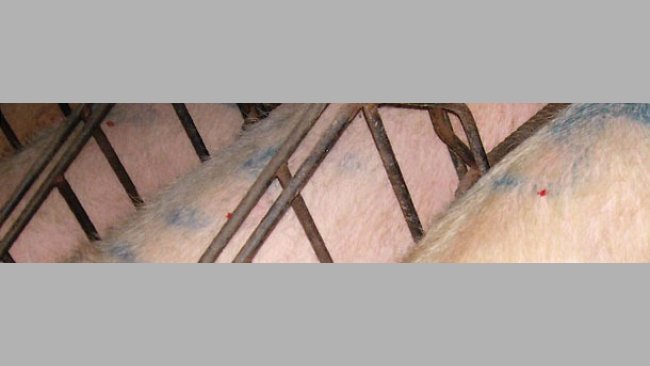
Marking the place where the Renco device must be placed
The goal is to increase the agility of the reading process of the body condition of the sows using the Renco device.
The pig sector events all around the world
Weekly newsletter with all the pig333.com updates
Swine industry news in your email
Pig health: news and articles on PRRS, PCV2, biosecurity, etc, Pig disease guide, atlas of pathology, clinical cases…
Biocheck.UGent is an independent, risk-based, scientific scoring system for assessing the quality of your on-farm biosecurity.
A visual and practical step-by-step guide on how to perform a necropsy on a pig.
All the information about ASF: how to recognize the disease, how it is transmitted, pictures of lesions, latest news, guides, etc.
All the information on Foot and Mouth Disease in pigs: how to recognize the disease, how it is transmitted, images of lesions, latest news, guides,...
Description of the most important diseases and conditions in pigs
Images of major swine diseases
Pig disease diagnostic tool
Definition for the most commonly used pig terms
Simulator that calculates the amount of drug to add to the water when using a flow dispenser.
Weekly newsletter with all the pig333.com updates
Pig Prices by countries. Pork production and trade. News of the pig market and the raw materials
The latest slaughter pig prices in the most important pig markets. Check the evolution of the historical prices in charts and in several currencies.
Latest quotations for the main commodities used in pig feed. Historical graphs with the pig price and estimated feed price.
Figures & trends in pig numbers, pork production and pork trade.
Global production and trade data for the most important raw materials
Weekly newsletter with all the pig333.com updates
Articles on nutrition and pig feeding, characteristics of raw materials and additives for pig feed. Prices of raw materials
Latest quotations for the main commodities used in pig feed. Historical graphs with the pig price and estimated feed price.
Technical sheets of the main raw materials and additives used in swine feed. They include a comparison of nutritional values from various sources, product
Global production and trade data for the most important raw materials
Definition for the most commonly used pig terms
Use this tool to diagnose problems with the feed conversion ratio. Click on the flowchart or on the buttons within the text to navigate through the different parts of the tool.
A biweekly newsletter with the latest developments in swine nutrition
Articles on genetics and pig reproduction: genetic improvement, genomics, artificial insemination, use of hormones
Compare production data, calculate the number of sow, nursery, and finishing spaces, and visualize your tasks on the work schedule by type of BMS.
Tool that allows you to calculate the replacement rate in your farm
Definition for the most commonly used pig terms
Use this tool to find out why your farrowing rate is less than ideal. Click on the flowchart or on the buttons found within the text to navigate through the different parts of the tool.
Weekly newsletter with all the pig333.com updates
Management, pig farm management, work planning in each production stage: management in gestation, grow finish, batch farrowing
Compare production data, calculate the number of sow, nursery, and finishing spaces, and visualize your tasks on the work schedule by type of BMS.
Tool that allows you to calculate the replacement rate in your farm
Definition for the most commonly used pig terms
Weekly newsletter with all the pig333.com updates
Design of facilities and equipment for pig farms: building design, climate control, feeding systems, etc.
Biocheck.UGent is an independent, risk-based, scientific scoring system for assessing the quality of your on-farm biosecurity.
Environmental Footprint Calculator along the pork value chain.
Definition for the most commonly used pig terms
Simulator that calculates the amount of drug to add to the water when using a flow dispenser.
Use this tool to explore which slurry management strategy best fits your situation. Click on the flow chart or on the buttons within the text to navigate through the different parts of the tool.
Weekly newsletter with all the pig333.com updates
What makes us stand out is the quality and independence of our contents. Find out about the authors who make it possible. Our goal is to generate a virtual community of advanced users in the sector.

Since graduating he has worked as a swine consultant, concentrating mainly on:
He has participated in several seminars for farmers and veterinarians at a national and international level, and he has published many articles and case studies, mainly for Pig333 (3tres3) and the magazine Suis.
In September of 2014 he joined IDT Biologika's international team to manage its technical services in Spain and Portugal.
In July of 2019 he joined the CEVA Animal Health technical service team.
Updated CV 23-Jun-2020

The goal is to increase the agility of the reading process of the body condition of the sows using the Renco device.
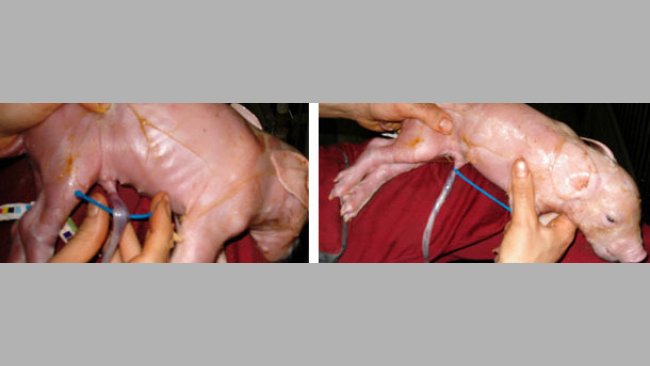
Using tie wraps to tie quickly and efficiently navel cords of newborn piglets.
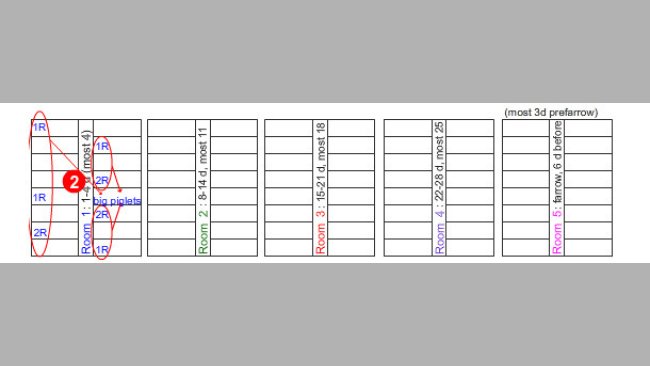
As of the 3rd-4th day of lactation it is not recommendable anymore to replace small piglets and piglets with poor a growth rate for good piglets, because it is probable that the teat that has to be used has already dried off due to the scarce stimulation received for several consecutive days.
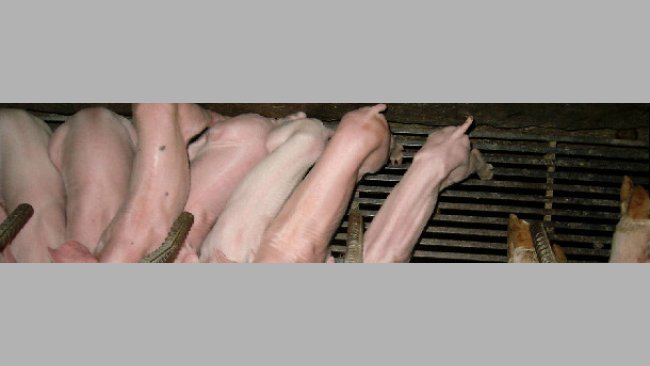
How to make that the sows start their lactation with the maximum number of viable piglets.
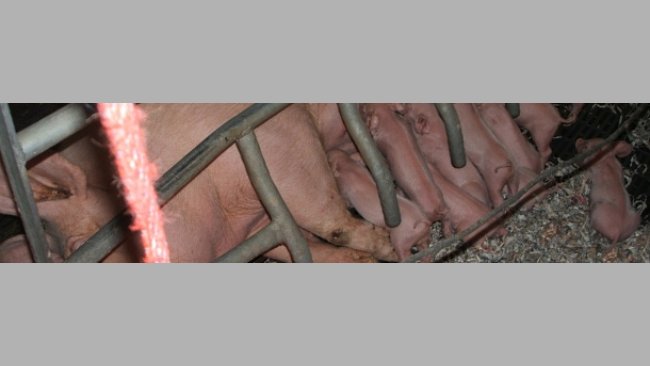
When there are not enough teats, the strongest piglet always occupies the place of the weak one, that is left without milk to suckle.
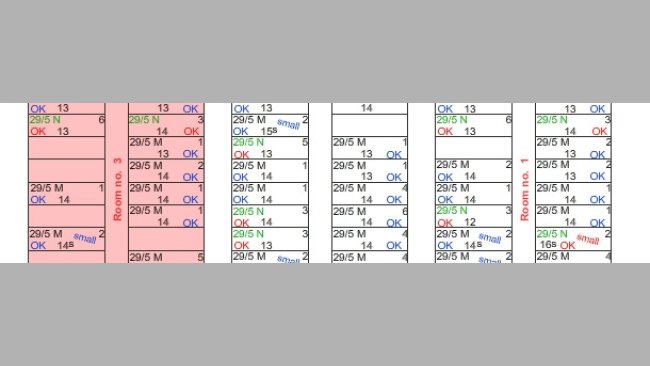
In the previous piece of advice we saw that in small farms it could be interesting to maintain a certain order when entering the sows in the farrowing quarters depending on their parturition. Nevertheless, in big farms or in farms that group together many farrowings at the same time we will have to think about the order in another way, because if the farrowing quarters are not very big we will have the same batch of sows housed in several rooms.
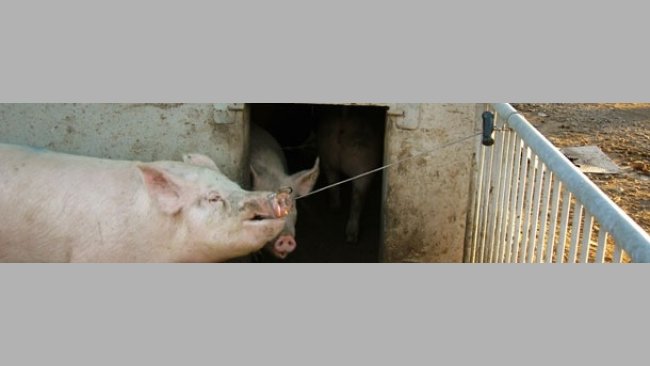
Lasso the pig with a metallic cable lasso and hold the end of the cable to a pen door or divider.

If once we have evened out the litters a sow farrows during the late evening, what do we do?

We are going to see a practical example of how to even out litters after the farrowings in a quick way and minimizing the swappings of piglets.
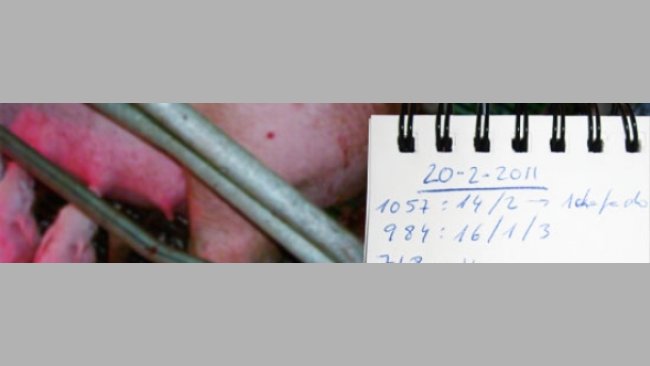
When the farrowings are programmed, their supervision has to be one of the main tasks in the farrowing quarters. The rest of the tasks must be organized in such a way that we can exert the maximum control over the programmed sows.
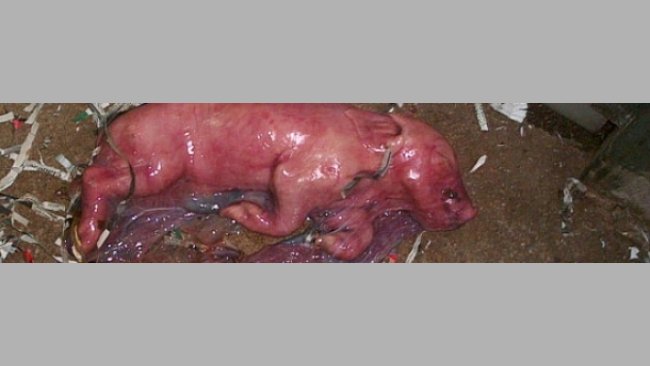
It would be so nice if the sows could warn us when there are problems when they are giving birth to their piglets during labour! This seems impossible… Or maybe it is not so.
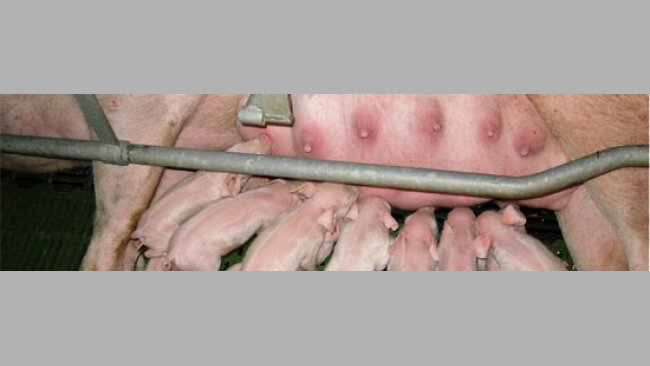
In the previous chapter we discussed the ideal time to level out litters of newborn piglets. Here's how to do it.
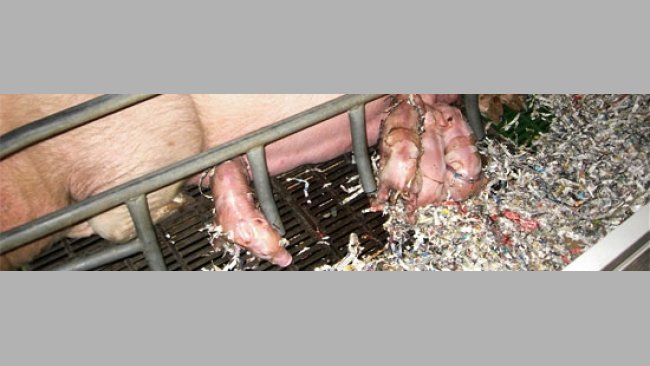
With the high prolificacy of sows nowadays, leveling out litters is one of the most hands-on jobs on the farms of today. It is one of the first steps to start lactation successfully.
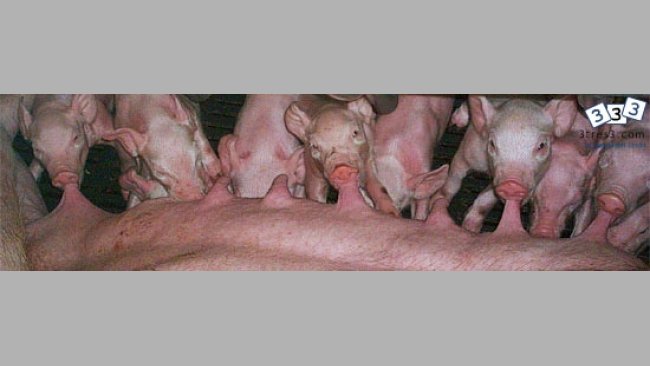
We have seen the importance of obtaining a sufficient dose of quality colostrum to generate the newborn’s defenses as well as the conflict that this can suppose when we level the litters after birth. Now lets take a look at the importance of rapidly obtaining colostrum and milk to ensure energy supply and minimize temperature loss.
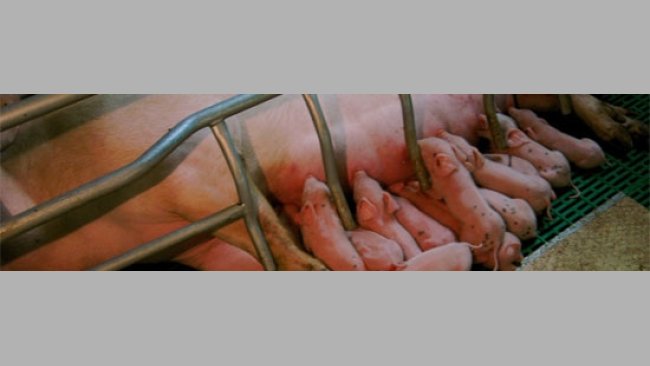
The ingestion of Ig in sufficient quantity is the first priority. So much so that it even comes before the factor that seems most important: the feed supply.
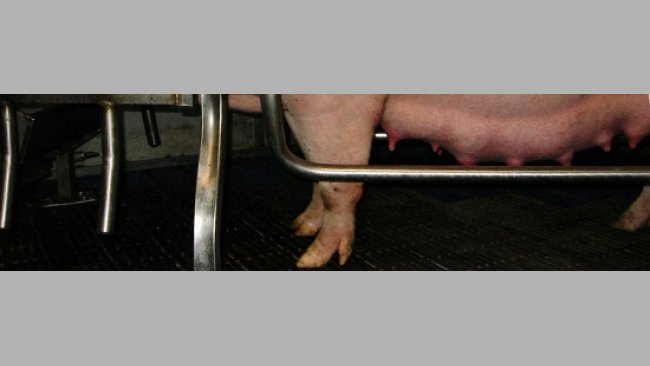
What if we were to wean on Friday and were able to block farrowings for 2 days? The bulk of farrowings would be concentrated on Monday.
Welcome to 333
Connect, share, and interact with the largest community of professionals in the swine industry.
Celebrating 196311Users on 333!
Sign upAlready a member?



